17.3 - Distorted |

|

|

|

|
|
17.3 - Distorted |

|

|

|

|
TitleBox Beam - Distorted |
|
||||||||
Number17.3 |
|||||||||
Brief DescriptionA steel box beam, fixed at one end and impacted at the other by an infinite mass. Results for distorted meshes are compared. |
|||||||||
Keywords
|
|||||||||
RADIOSS Options
|
|||||||||
Input FileMesh 0: <install_directory>/demos/hwsolvers/radioss/17_BoxBeam/Distorted_mesh/mesh0/...//BOXBEAM* Mesh 1: <install_directory>/demos/hwsolvers/radioss/17_BoxBeam/Distorted_mesh/mesh1/...//BOXBEAM* Mesh 2: <install_directory>/demos/hwsolvers/radioss/17_BoxBeam/Distorted_mesh/mesh2/...//BOXBEAM* Mesh 3: <install_directory>/demos/hwsolvers/radioss/17_BoxBeam/Distorted_mesh/mesh3/...//BOXBEAM* |
|||||||||
Technical / Theoretical LevelAdvanced |
|||||||||
A steel box beam fixed at one end, is impacted at the other end by an infinite mass. The dimensions of the box beam are 203 mm x 50.8 mm x 38.1 mm, and its thickness is 0.914 mm. As symmetry is taken into account, only one quarter of the structure is modeled. Four kinds of mesh and three plasticity formulations are compared (global plasticity, five integration points and iterative plasticity).
Units: mm, ms, g, N, MPa
The material used follows an isotropic elasto-plastic (/MAT/LAW2) with the Johnson-Cook plasticity model, with the following characteristics:
| • | Initial density: 7.8 x10-3 g/mm3 |
| • | Young modulus: 210000 MPa |
| • | Poisson ratio: 0.3 |
| • | Yield stress: 206 MPa |
| • | Hardening parameter: 450 MPa |
| • | Hardening exponent: 0.5 |
| • | Maximum stress: 340 MPa |
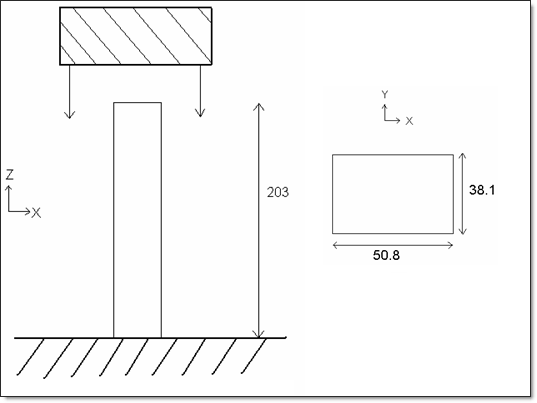
Fig 54: Problem studied.
Four beams are modeled with different kinds of mesh, all having 56 elements in length and 8 in height. The layout of the elements is shown in the following diagram.
The following are tested for each model:
| 1. | Element formulation: |
| • | BT_TYPE1 |
| • | BT_TYPE3 |
| • | QEPH |
| • | BATOZ |
| • | C0 |
| • | DKT18 |
| 2. | Plasticity: |
| • | Global plasticity |
| • | Progressive plasticity with five integration points |
| • | Iterative plasticity with five integration points and variable thickness |
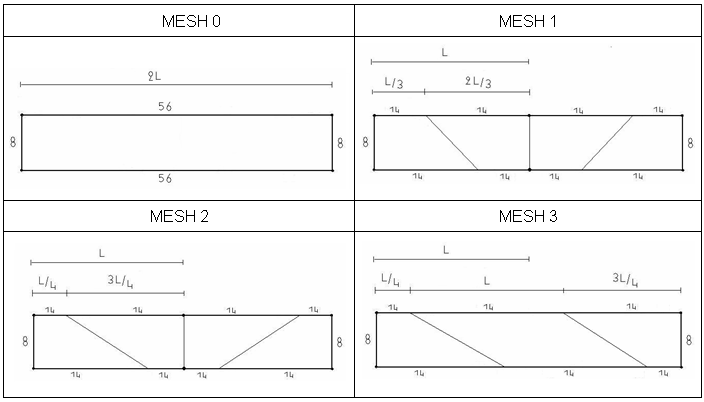
Fig 55: Meshes.
| • | Boundary conditions: |
Take into account the symmetry, all nodes in the Y-Z plan are fixed in a Y translation and an X and Z rotation. One quarter of the structure is modeled.
| • | Rigid body: |
The lower (fixed) end is modeled using a rigid body connecting all lower nodes (Z = 0.0). The rigid body is completely fixed in translations and rotations.
| • | Wall: |
The impactor is modeled using a sliding rigid wall with a fixed velocity (13.3 m/s) in the Z-direction and fixed for other translations and rotations.
| • | Interfaces: |
The structure’s self-impact is modeled using a type 7 interface on the full structure. The interface master surface is defined using the complete model. The slave nodes group is defined using the master surface.
On top of the beam, the possible edge-to-edge impacts are dealt with using a type 11 self-impacting interface. The edges use the master surface of the type 7 interface as the input surface.
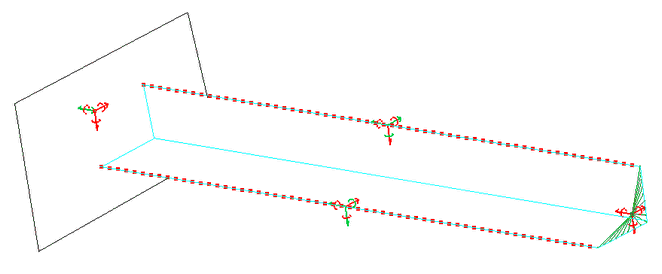
Fig 56: Boundary conditions.
The results are compared using three different views:
| • | The role and influence of the mesh for a given type of element formulation. |
| • | Shell element formulations for a given mesh. |
| • | Plasticity options for a given mesh and element formulation. |
Three criteria are used to compare the quality of the results obtained:
| • | Crushing force versus displacement |
The crushing force corresponds to the normal force in the Z-direction of the impactor (rigid wall), multiplied by 4 due to symmetry.
For comparison, displacement corresponds to the Z-direction motion of the rigid wall’s master node.
| • | Hourglass energy |
| • | Total energy |
Total absorption energy is the sum of internal energy and hourglass energy.
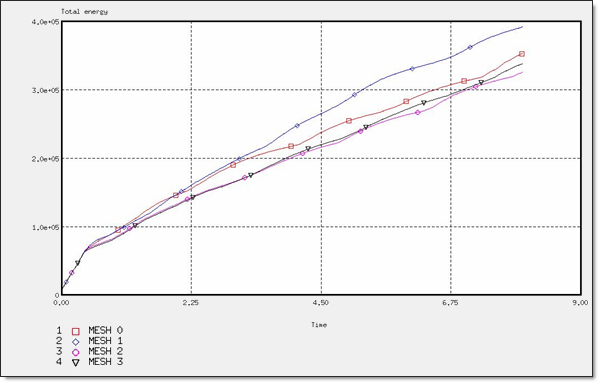
Fig 57: Total energy for a BT_TYPE3 formulation.
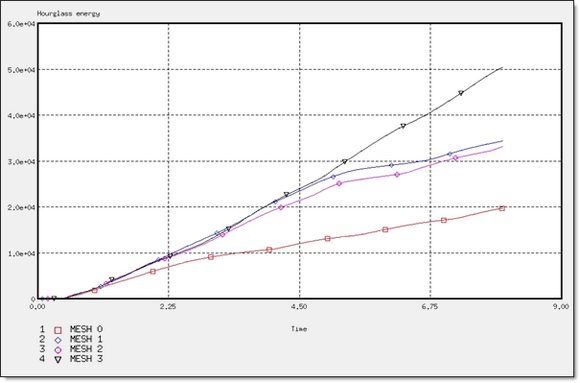
Fig 58: Hourglass energy for a BT_TYPE3 formulation.
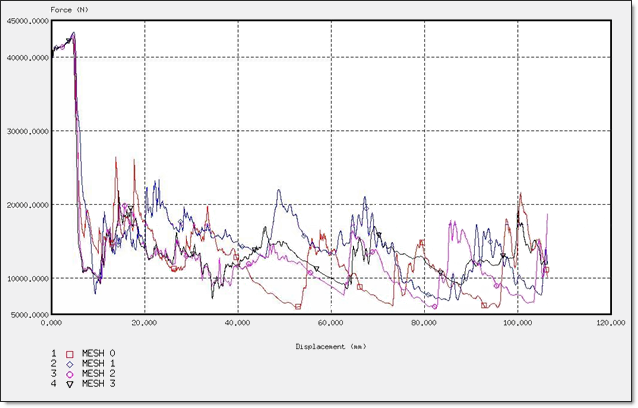
Fig 59: Force for a BT_TYPE3 formulation.
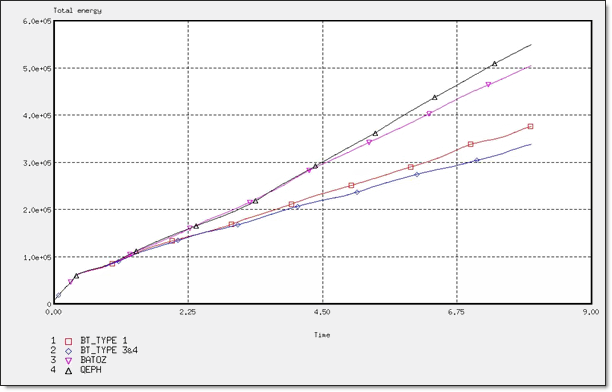
Fig 60: Total energy for different element formulation.
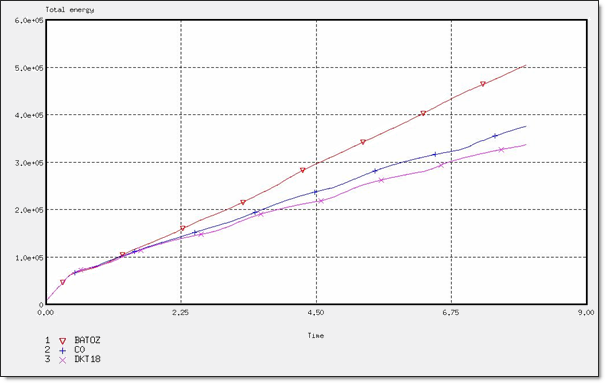
Fig 61: Total energy for different element formulation.
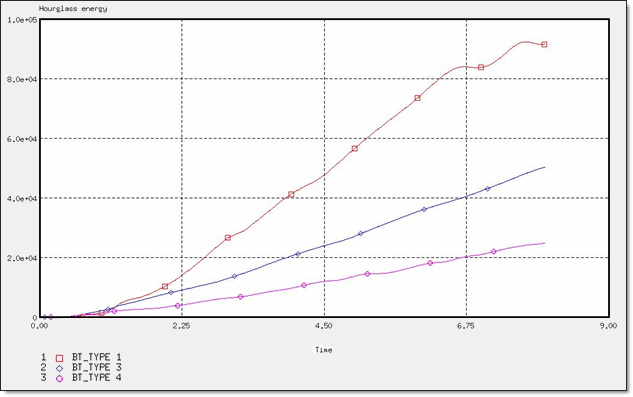
Fig 62: Hourglass energy for different BT element formulation.
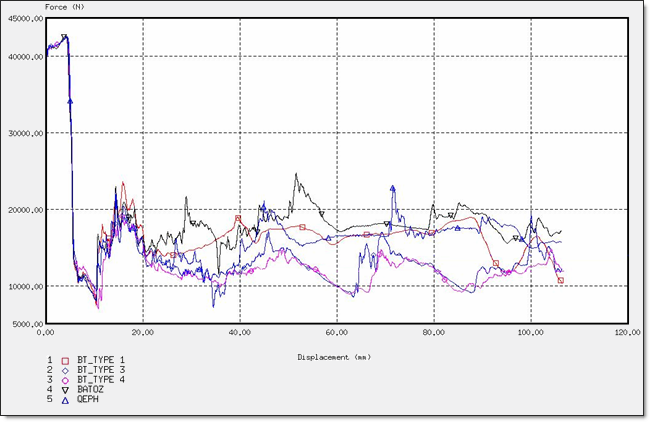
Fig 63: Force for different element formulation.
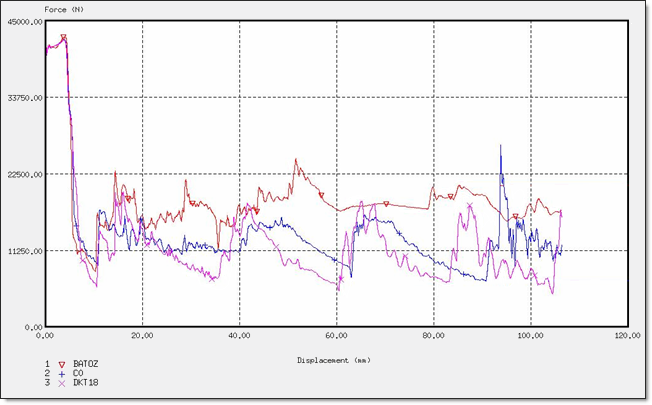
Fig 64: Force for different element formulation.
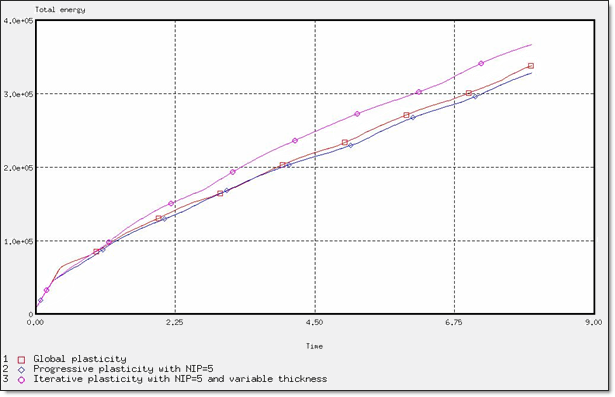
Fig 65: Total energy.
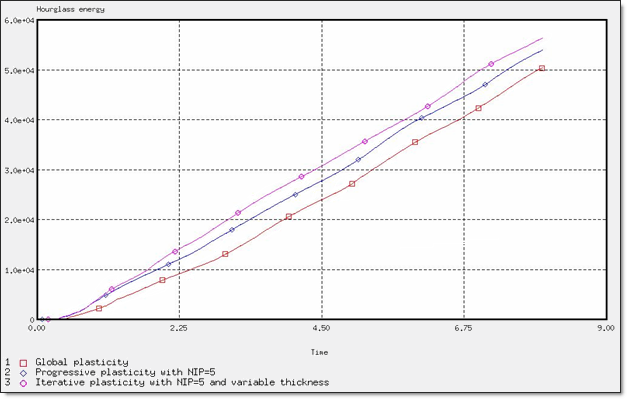
Fig 66: Hourglass energy.
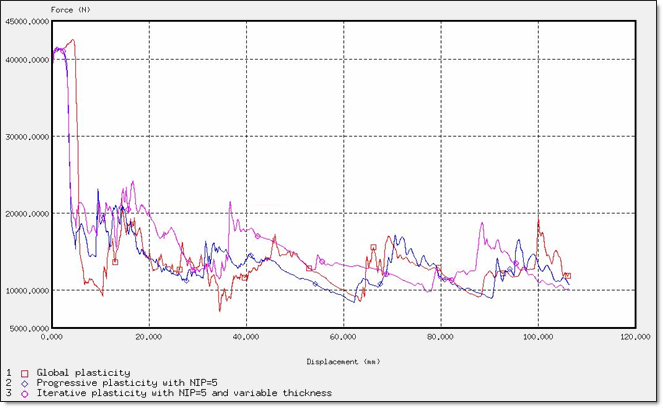
Fig 67: Crushing force.
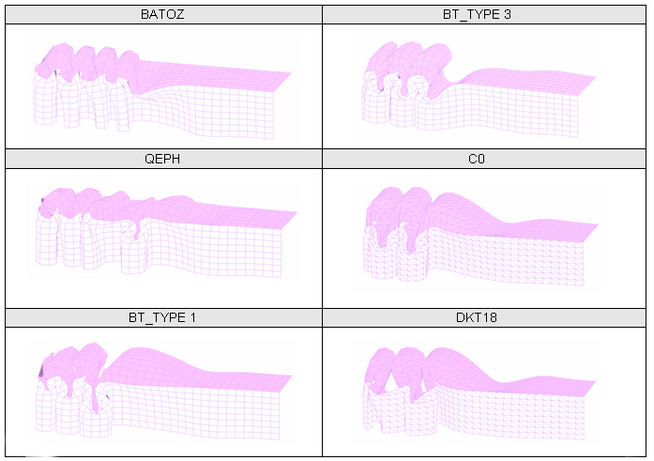
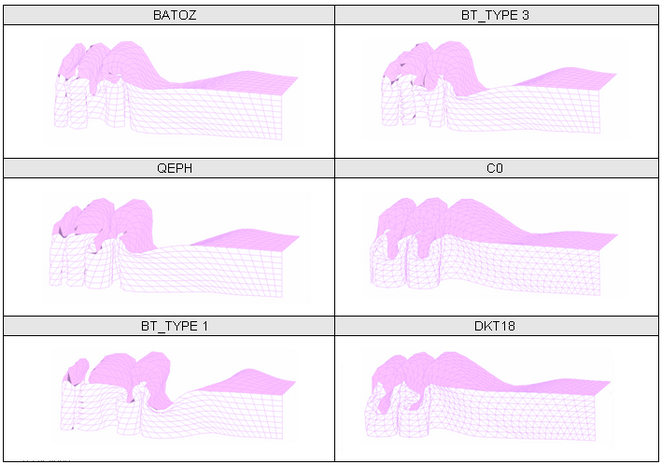
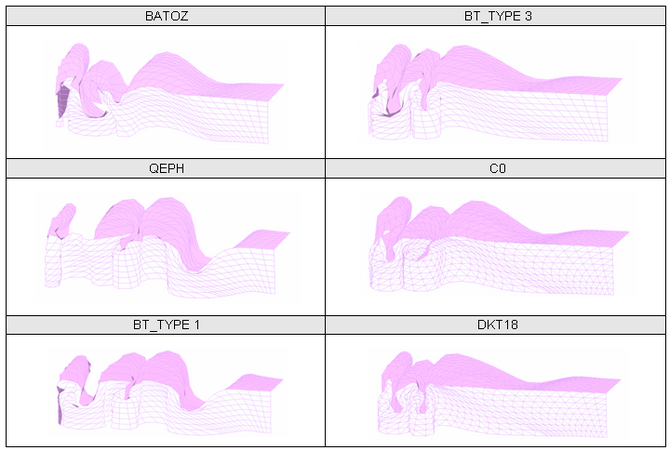
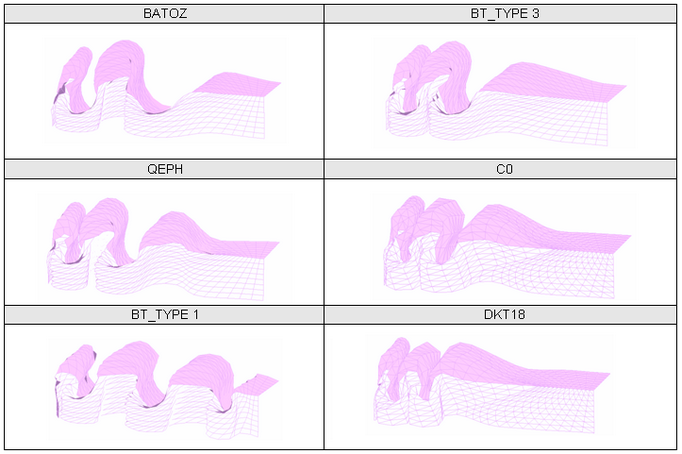
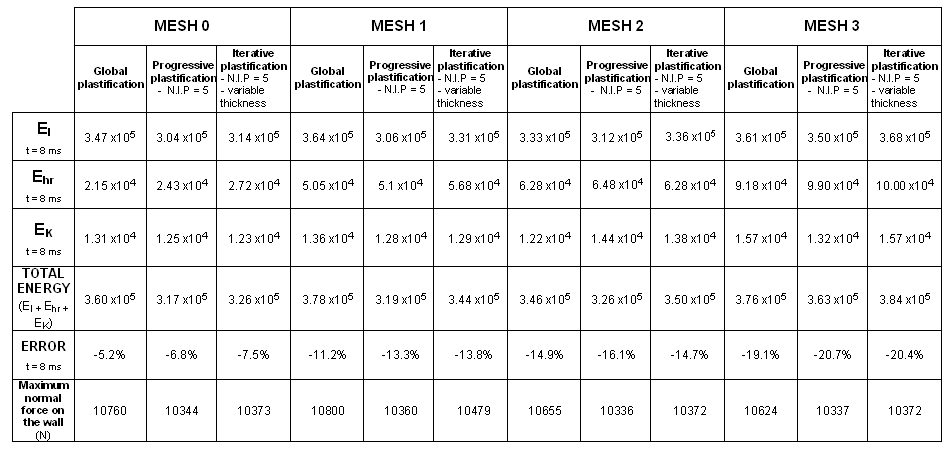
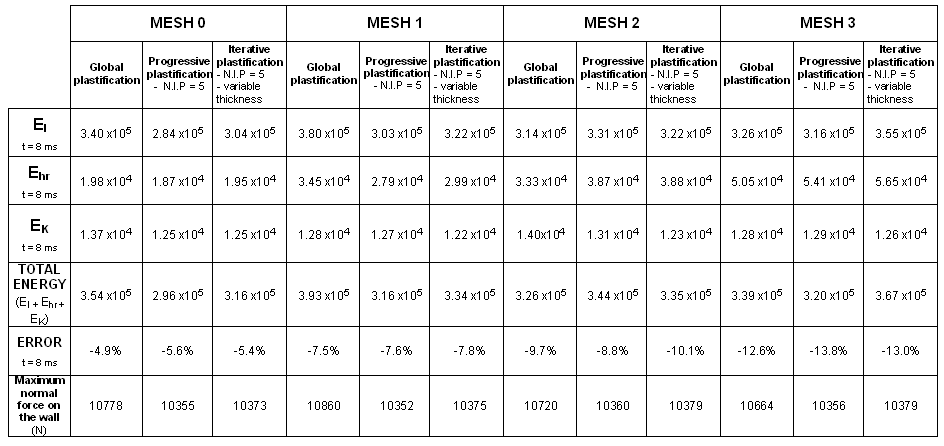
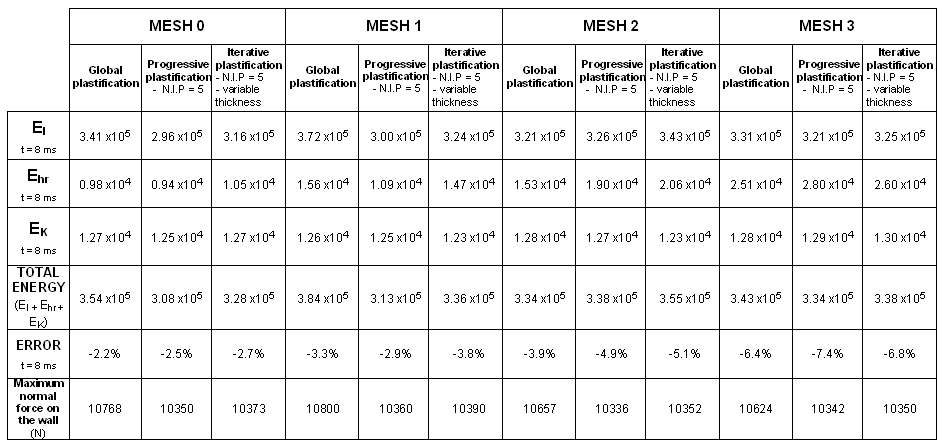
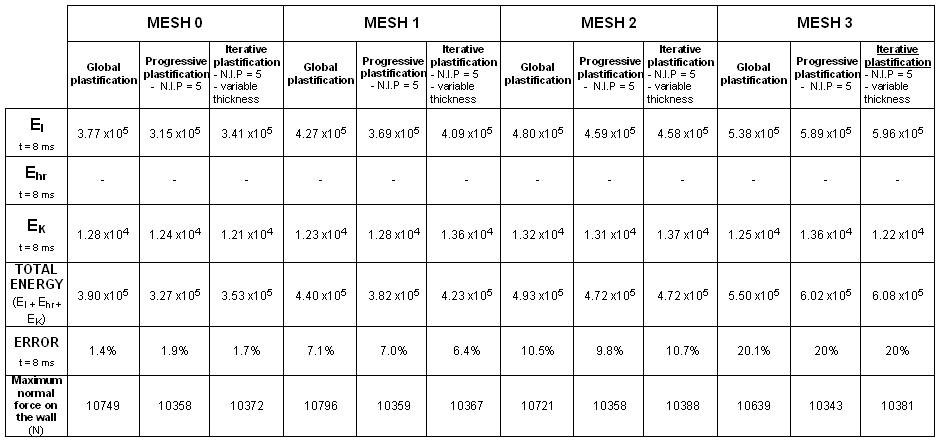
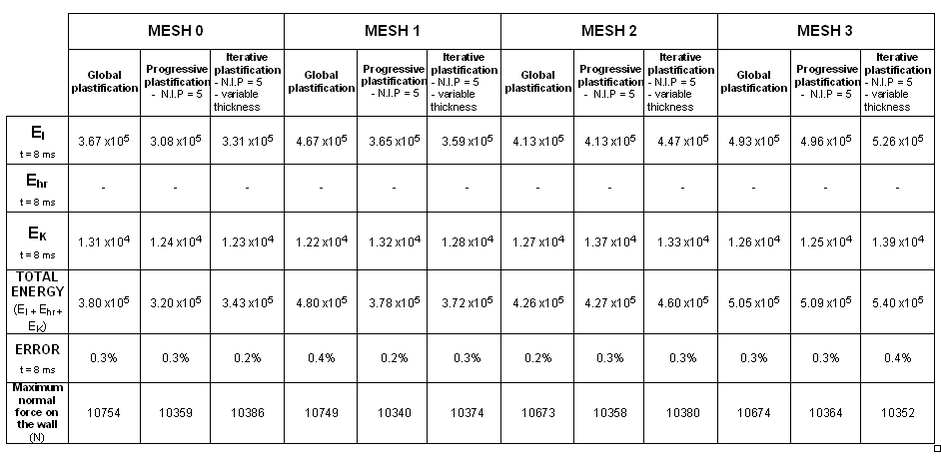
Formulation: DKT18
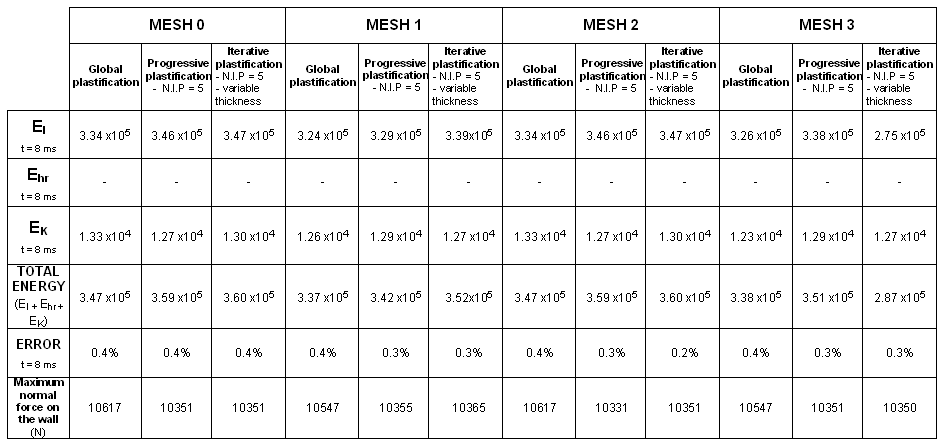
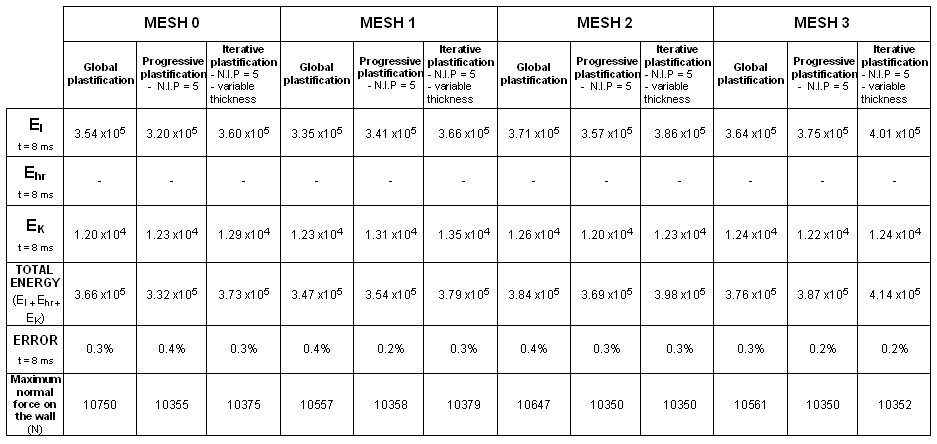
The crash of a box beam using several meshes and finite element formulations was studied in detail. The simulation results for uniform, mapped and transit meshes are classified and compared for each different shell formulation. The results obtained illustrate the sensitivity of the shell elements with respect to the quality of the mesh for a typical crash problem.